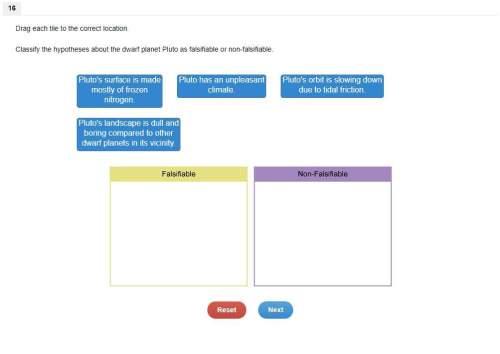
Physics, 10.10.2019 19:00 reecedstceklein
An object moving in a liquid experiences a linear drag force: d= (bv, direction opposite the motion), where b is constant called the drag coefficient. for a sphere of radius r, the drag constant can be computed as b = 6πηr, where η is the viscosity of the liquid. a. use what you've learned in calculus to prove thatb. find an algebraic expression for , the x-component of velocity as a funtion of distance traveled, for a spherical particle of radius r and mass m that is shot horizontally with initial speed through a liquid viscosity η.c. water at 20°c has viscosity . suppose a 1.0-cm-diameter, 1.0 g marble is shot horizontally into a tank of 20°c water at 10 cm/s. how far will it travel before stopping?

Answers: 2


Other questions on the subject: Physics

Physics, 22.06.2019 07:20, raemyiajackson1
Use the information presented in the graph to answer the questions. which segments show acceleration? which segment indicates that the object is slowing down? what is the velocity of segment b? what is the acceleration of segment b?
Answers: 3

Physics, 22.06.2019 09:10, ehehvevsbg
The diagram shows a series of volcanic island and a hot spot determine the direction of movement of the tectonic plate that for the island
Answers: 1

Physics, 22.06.2019 18:00, championroof
Acid precipitation chemically weathering a 5.0-kg limestone rock . which coukd be the result ?
Answers: 1

Physics, 22.06.2019 18:30, TheSpeedster
Two trains leave a station at the same time, train a travels at a constant speed of 16 m/s. train b starts at 8.0 m/s but accelerates constantly at 1.0 m/s squared. after 10.0 seconds, which train has the greater speed?
Answers: 1
You know the right answer?
An object moving in a liquid experiences a linear drag force: d= (bv, direction opposite the motion...
Questions in other subjects:

History, 20.11.2020 17:40




Mathematics, 20.11.2020 17:40



Health, 20.11.2020 17:40


Mathematics, 20.11.2020 17:40




